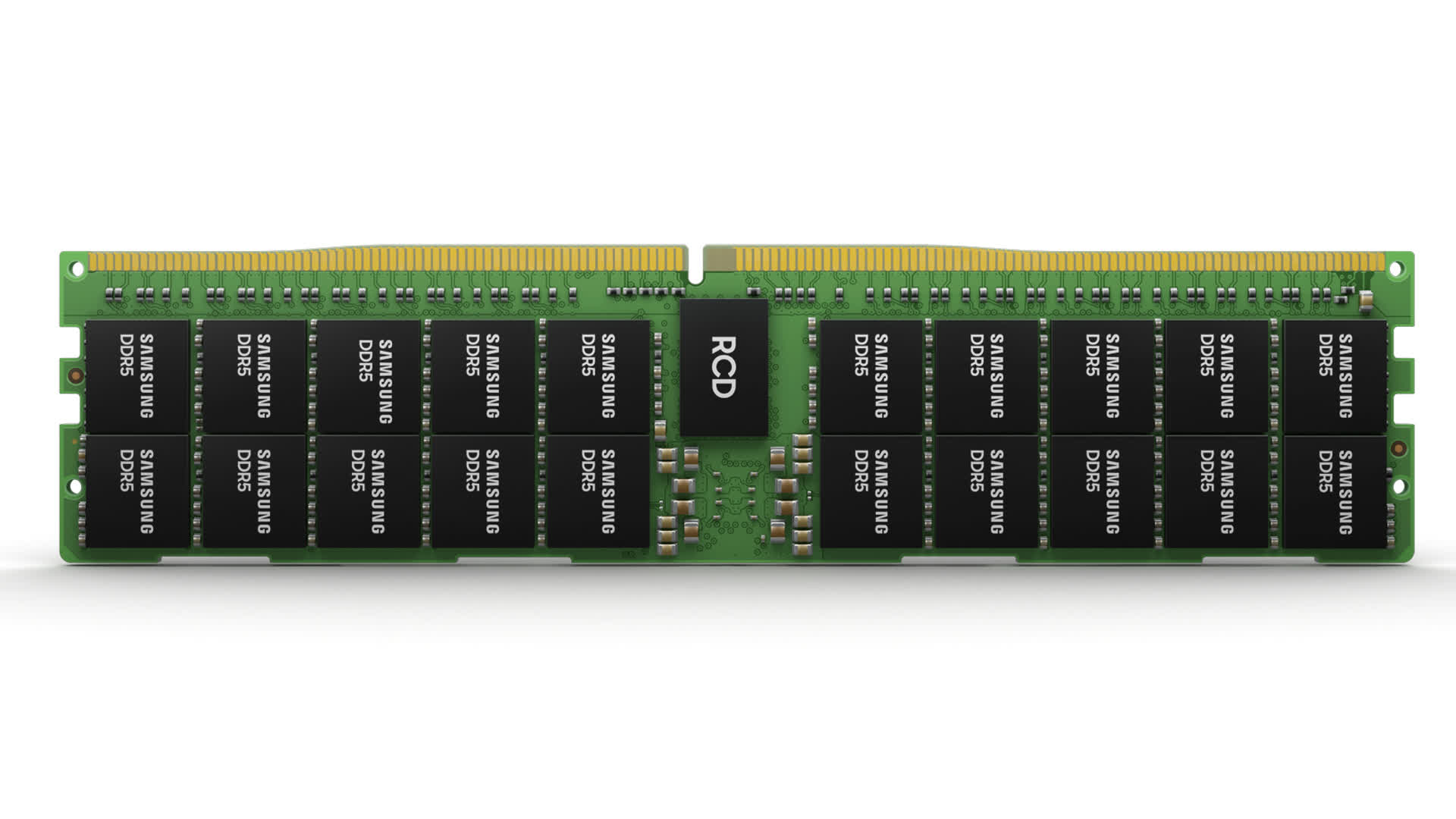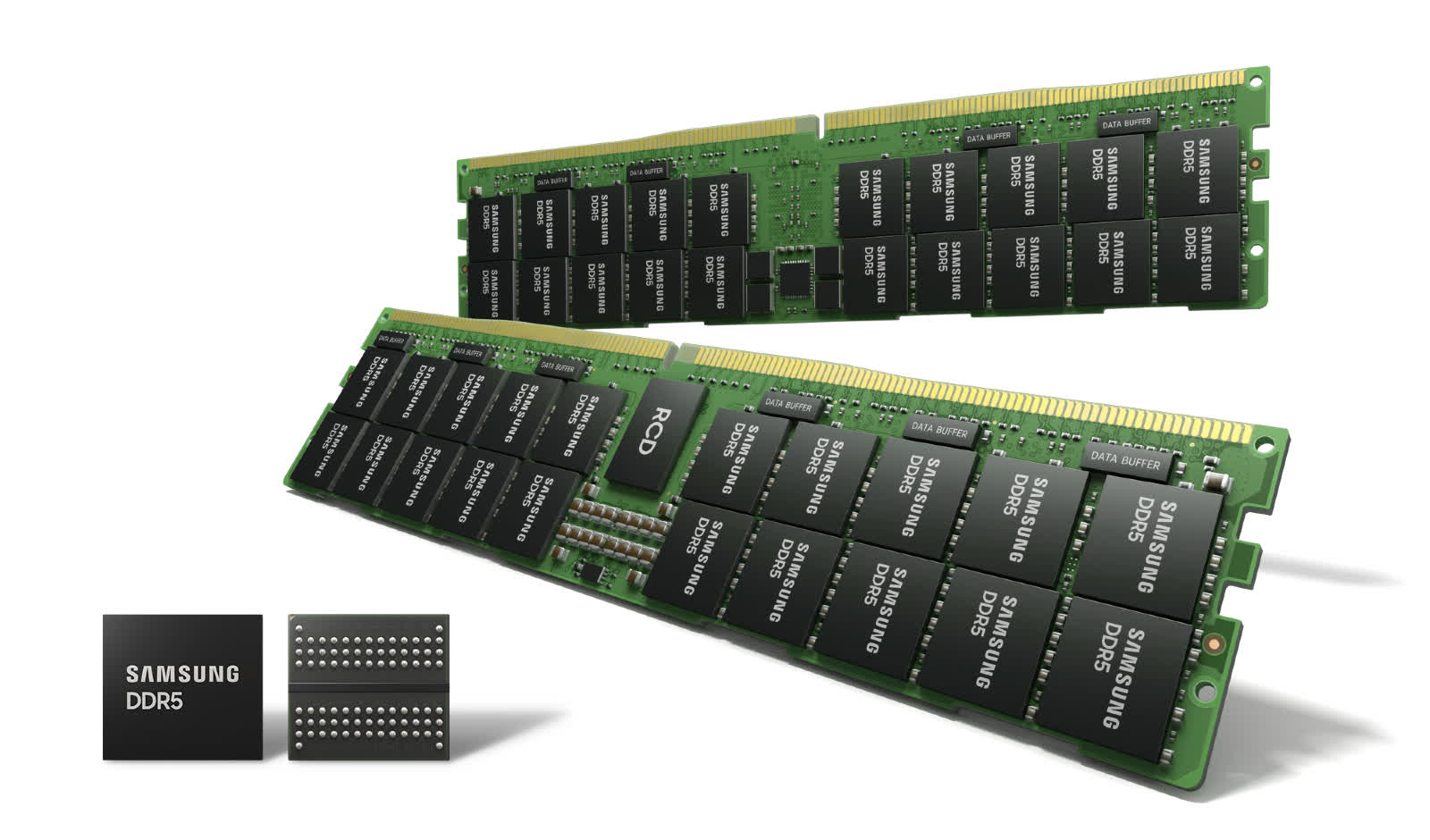Something to look forward to: Samsung has announced that it's begun mass producing 14-nanometer (nm) DRAM, the industry's smallest, that will be formed on extreme ultraviolet (EUV) technology. The number of EUV layers has been increased to five to "deliver today's finest, most advanced DRAM process for its DDR5 solutions."
Taking advantage of the latest DDR5 standard, Samsung says its 14nm DRAM will help unlock "unprecedented speeds" of up to 7.2 gigabits per second. Comparatively, it's more than twice the speed of DDR4 of up to 3.2Gbps.
Due to applying five EUV layers – a process that enables the industry's highest DRAM bit density – Samsung will increase overall wafer productivity by around 20 percent. The 14nm process will allow power consumption to be reduced by nearly 20 percent compared to previous-generation DRAM chips. The company stressed the importance of EUV technology, particularly its ability to improve patterning accuracy for higher performance and greater yields.
DDR5 will deliver technology required for greater performance and capacity for fields like artificial intelligence, next-generation server workloads, and supercomputers.

"We have led the DRAM market for nearly three decades by pioneering key patterning technology innovations," said Jooyoung Lee, senior vice president and head of DRAM Product & Technology at Samsung Electronics. "Today, Samsung is setting another technology milestone with multi-layer EUV that has enabled extreme miniaturization at 14nm --- a feat not possible with the conventional argon fluoride (ArF) process."
Samsung also revealed plans to expand its 14nm DDR5 portfolio that will provide support for data center, supercomputer and enterprise server applications. In addition, to meet the increasing data demands of global IT systems, the tech giant expects to grow its 14nm DRAM chip density to 24Gb.
As the 12th generation of Intel CPUs gets prepared for an unveiling soon, Alder Lake DDR5 leaks will be welcome news for enthusiasts. DDR5 is expected to hold more market share than its predecessor by 2023, but the changes it will bring may require it to feature adequate cooling solutions.
